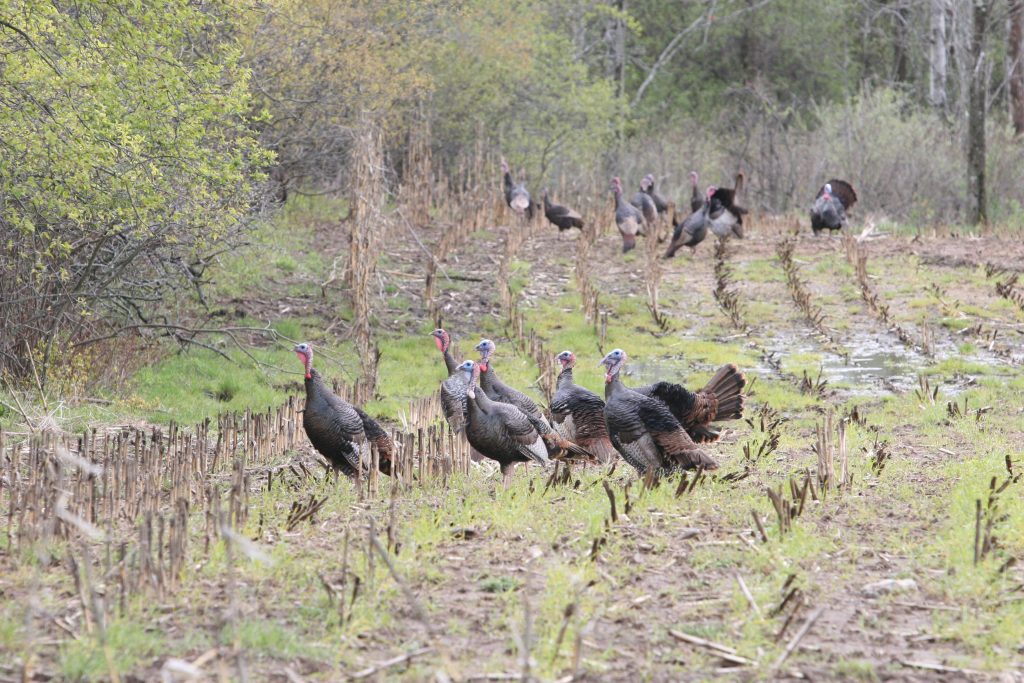Fall Flock Fidelity
GPS data across a variety of studies has shown that female wild turkeys exhibit high fidelity to certain areas between years, where flocks will group back up in the same spot year over year more than 80% of the time.
I can remember my grandfather and my mom telling me stories of the first white-tailed deer they ever saw on our farm in the 1950s. It was out feeding with the cattle and one of the neighbors snuck over and shot it, and mom said she had never seen grandpa so mad. As we are not exactly in a deer deficit on our farm anymore, land management in the family has changed toward creating more open hardwood habitat and native grass restoration for wild turkeys. All that effort has finally come to fruition, as wild turkeys showed up on the farm in fall of 2023, for the first time in my life. However, when spring hits, the birds disappear and don’t start showing back up until about August, and we see them regularly all winter until about March. I suspect many of our readers have noticed the same phenomenon with wild turkeys, here sometimes, gone others, so I wanted to write a bit about what we know, or don’t know, about the fall and winter fidelity of wild turkeys.
Here Today, Gone Tomorrow
Every hunter or landowner I have ever talked to has discussed how turkeys will be in one place all winter, then poof, gone just like the ones on our farm come spring. Breeding season movements are defined by everyone separating right before or during reproduction, so what do we call it when wild turkey flocks group back up in the fall – a fall aggregation perhaps? GPS data across a variety of studies has shown that female wild turkeys exhibit high fidelity to certain areas between years, where flocks will group back up in the same spot year over year more than 80% of the time. I suspect that these fall aggregations are more important than we realized, and that number surprised me, as it indicates that wild turkeys may show inter-annual breeding site fidelity at the flock level. If flocks use the same place year over year – irrespective of which birds die, live, or move in or head out – then that has some interesting ramifications for conservation and management. There is a concept called “always stay” in science, which generally means that if you stay in the same place over time, you increase survival or reproduction. If more than 80% of the time flocks of wild turkeys go back to the same spot, that has to be a learned behavior. We usually only see flock aggregation and fidelity during fall and winter, as it generally falls apart in spring when nesting commences. So, maybe our conservation work where we focus on wild turkeys as individuals, such as responses to management, need to be evaluated at the flock level?

Winter Residency
Winter is an odd time for turkeys and turkey biologists. It doesn’t matter where you are, all wild turkeys do in winter is eat, sleep and try not to die, kind of like wild turkey graduate students who are back on campus after a summer of fun in the sun! Of course, there are differences between what a south Texas Rio Grande does in December versus an Eastern in northern Maine, but wild turkeys are pretty relaxed in winter, generally speaking. Ranges adjust depending on availability of food and roosting conditions, juvenile males tend to break off into little flocks away from the young of the year, and some social networking (e.g., fighting for their place) occurs. But, what is interesting to me is that flocks use the same place nearly every winter, over 75% of the time! This leads me to an important point: We focus a lot of effort on managing for open habitat for reproductive conditions when we don’t know where the females are going to nest, but, we spend very little time managing for fall and wintering habitats, when we DO know where the birds are going! With wild turkeys continuing to show variable population trajectories across the U.S, conservation actions focused on fall and winter seasons seem to be an area we can influence directly. So, the next time you are visiting with your local state or federal agency biologist, ask what you can do to increase the quality and quantity of habitat in those areas where your fall and winter flocks show up every year.
